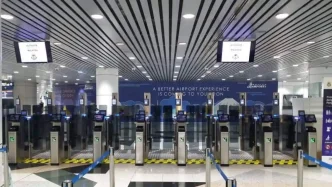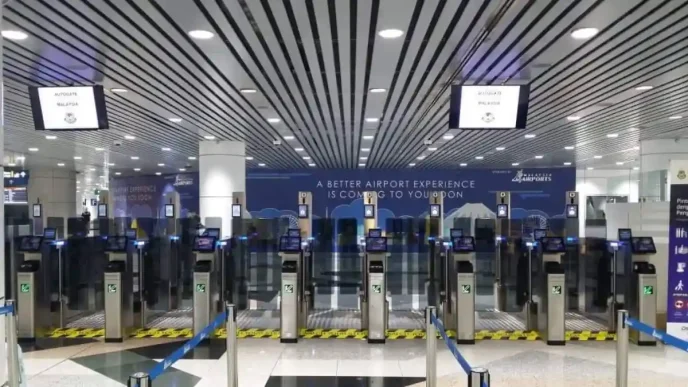Chinese investments have become a cornerstone of Malaysia’s economic growth, reshaping industrial hubs and fostering job creation across the country. With billions of ringgit flowing into sectors ranging from steel to electric vehicles (EVs), the partnership between China and Malaysia, epitomized by initiatives like the “Two Countries, Twin Parks” model, signals a deepening economic alliance. As Malaysia positions itself as a regional hub within the Association of Southeast Asian Nations (ASEAN), questions linger about the long-term implications of this reliance on foreign capital.
A Surge in Chinese Capital
In 2024, China emerged as one of Malaysia’s largest sources of foreign direct investment, pouring 28.2 billion ringgit (US$6.4 billion) into the country, according to the Malaysian Investment Development Authority (MIDA). This figure, representing over 16 percent of Malaysia’s total foreign investment of 170.4 billion ringgit, nearly doubled the 14.5 billion ringgit recorded in 2023. The influx is expected to generate over 20,000 new jobs, highlighting the tangible socioeconomic impact of these investments.
The Malaysia-China Kuantan Industrial Park (MCKIP) in Pahang state stands as a flagship of this collaboration. Spanning more than 14 square kilometers, MCKIP hosts a mix of heavy, medium, and light industries alongside residential and commercial zones. Mazlim Husin, chief commercial officer of Kuantan Port, described the park as a game-changer for the region. “It has changed the landscape of the whole industrial development in Kuantan” he told China Daily, noting how the presence of major players like Alliance Steel has spurred further investment and local job creation.
Similarly, the China-Malaysia Qinzhou Industrial Park in Guangxi Zhuang autonomous region of China complements MCKIP under the “Twin Parks” framework, symbolizing a mutual commitment to economic cooperation. These parks are not just industrial zones; they represent a broader strategy to strengthen bilateral ties through shared growth.
Strategic Sectors and Regional Ambitions
Chinese investments in Malaysia are increasingly focused on high-growth sectors such as electric vehicles, battery production, and technology. Safwan Nizar Johari, acting investment consul for the Malaysian consulate in Guangzhou, highlighted the surge in EV and battery-related projects in recent years. He attributed this trend to Malaysia’s business-friendly policies, including tax incentives and 100 percent foreign equity ownership, as well as the country’s strategic position within ASEAN and the Regional Comprehensive Economic Partnership (RCEP), the world’s largest free trade pact.
“When they choose Malaysia, it feels like home. It is very comfortable for them to set up a business in Malaysia” Safwan explained to China Daily, pointing to the cultural affinity bolstered by Malaysia’s significant ethnic Chinese population, which constitutes about 20 percent of the country’s 35 million people. This multicultural environment, coupled with a multilingual workforce fluent in Malay, Chinese, and English, makes Malaysia an attractive destination for Chinese firms looking to expand in Southeast Asia.
As ASEAN chair in 2025, Malaysia is leveraging its position to attract more foreign investment, with a theme of inclusivity and sustainability. Safwan emphasized that Malaysia aims to be a gateway not only to its domestic market but also to the broader ASEAN region and global export markets. “We believe in the win-win scenario. When they invest in Malaysia, we want to grow with the other ASEAN countries” he said, rejecting a zero-sum approach to regional competition.
Key Players and Local Impact
Prominent Chinese companies have left a significant footprint in Malaysia over the past two decades. Huawei, which entered the market in 2001, has established Kuala Lumpur as its Asia-Pacific regional headquarters and a hub for global training and innovation centers. On February 18, 2025, the tech giant launched the Mate XT, the world’s first trifold smartphone, in Malaysia’s capital, underscoring the country’s importance in its international operations.
ZTE, another early investor since 2004, sources 95 percent of its 5G equipment chips from Malaysia, according to Malaysia’s Minister of Investment, Trade and Industry, Zafrul Aziz. In a December 2024 post on X, Zafrul revealed plans for ZTE to invest 200 million ringgit (US$45 million) in two innovation centers, aiming to introduce cutting-edge 5G technology through partnerships with local operators.
Beyond technology, Chinese firms are making strides in manufacturing and automotive industries. The China Railway Rolling Stock Corporation set up its first overseas manufacturing base in Perak in 2015, producing up to 200 carriages annually and employing over 80 percent local staff. Meanwhile, Geely Holding Group’s 2017 acquisition of a 49.9 percent stake in Proton, Malaysia’s national car company, has revitalized the brand with ambitions to dominate the ASEAN market. In early 2025, Proton broke ground on a new 82 million-ringgit (US$18 million) EV production plant in Tanjong Malim, Perak, set to manufacture models like the Proton e.MAS 7, the first EV by a Malaysian carmaker.
Cultural and Strategic Synergies
The alignment between Malaysia and China extends beyond economics to cultural and strategic dimensions. Daniel Chua, senior vice-president of GP Energy Tech International, a subsidiary of Gold Peak Technology Group, noted that Chinese companies feel “comfortable” investing in Malaysia due to shared cultural elements and a welcoming business environment. Gold Peak’s proposed $150 million nickel-based battery manufacturing facility in the Johor-Singapore Special Economic Zone (JS-SEZ) is expected to create up to 180 jobs, prioritizing local talent and suppliers.
Chin Yew Sin, president of the Asia-Pacific Strategy Research Center in Kuala Lumpur, described China’s investments as part of a “closely tied partnership ingrained in cultural, economic, and strategic advantages.” He pointed to Malaysia’s investment-friendly climate and the global trend of supply chain diversification through the “China+1” strategy, where companies maintain operations in China while expanding to other nations like Malaysia to mitigate risks.
Ian Yoong Kah Yin, a private equity investor, echoed this sentiment, observing that Chinese firms are accelerating the establishment of manufacturing operations in Malaysia. He welcomed the transfer of skills and the role of these companies as “role models to Malaysians in creating world-class businesses.”
Opportunities and Challenges Ahead
While the benefits of Chinese investments are evident in job creation and industrial growth, analysts caution against over-reliance on foreign capital. The scale of China’s financial involvement raises questions about economic sovereignty and the potential for dependency. If geopolitical tensions or policy shifts in either nation disrupt this partnership, Malaysia could face vulnerabilities in key sectors like technology and automotive manufacturing.
Moreover, the focus on high-tech industries and large-scale projects may sideline smaller local businesses unable to compete with the resources of foreign giants. Ensuring that economic gains are equitably distributed across Malaysia’s diverse population remains a critical challenge for policymakers. Initiatives like MCKIP and JS-SEZ must prioritize inclusive growth, balancing foreign investment with support for domestic entrepreneurs.
On the flip side, Malaysia’s strategic positioning within ASEAN and its proactive policies offer a robust foundation for sustained growth. The government’s emphasis on sustainability, as seen in its 2025 ASEAN chairmanship theme, aligns with global trends toward green technology—an area where Chinese investors, particularly in EV and battery sectors, are already making significant contributions.
A Partnership for the Future
As Malaysia and China mark over five decades of diplomatic relations, their economic collaboration continues to evolve, driven by mutual interests and complementary strengths. From industrial parks to EV hubs, Chinese investments are not merely financial transactions but catalysts for regional integration and innovation. Yet, as this partnership deepens, Malaysia must navigate the delicate balance between welcoming foreign capital and safeguarding its long-term economic independence. For now, the transformation of cities like Kuantan and Johor stands as a testament to the power of cross-border cooperation, with the promise of more shared progress on the horizon.














